Raw Food Ingredients
How To Prepare Raw Cacao Drink

When it comes to treating yourself to a cozy, comforting drink, nothing quite satisfies like a mug of creamy, indulgent raw cacao beverage. This delightful blend is akin to a warm embrace, comforting both the mind and the body.
But before we dive into the delightful process of preparing this divine elixir, let’s clarify one thing: cacao and cocoa are not the same thing. Cacao is the purest form of chocolate, packed with antioxidants and nutrients, while cocoa has been processed and often mixed with additives.
Armed with this knowledge, it’s time to gather our ingredients and embark on this delicious adventure. With a base of your choice, a bit of heat, and a touch of sweetness and flavor, we’ll create a drink that will tantalize your taste buds and nourish your body.
So, without further ado, let’s get started on this delightful journey of preparing a raw cacao drink that will transport you to chocolate paradise.
Key Takeaways
- Raw cacao drink is made from unroasted cocoa beans and has a rich taste and numerous health benefits.
- Ethically sourced cacao beans are important for quality and supporting farmers and the environment.
- The base for raw cacao drink can be nut milk, coconut water, regular milk, or water.
- To prepare raw cacao drink, heat the base slowly, mix in cacao powder, add sweeteners and flavorings, strain the drink, and serve hot or cold with optional toppings or garnishes.
Understand the Difference Between Cacao and Cocoa
Get ready to have your mind blown as we uncover the fascinating difference between cacao and cocoa!
While they may sound similar, cacao and cocoa are actually two distinct products with unique qualities.
Cacao refers to the raw, unprocessed form of chocolate, while cocoa is the processed version.
The key difference lies in the way they are made. Cacao is made by cold-pressing unroasted cocoa beans, which helps retain its natural nutrients and flavors. On the other hand, cocoa is made by roasting the beans at high temperatures, resulting in a slightly sweeter and milder flavor.
Not only does cacao have a richer taste, but it also boasts numerous health benefits. It is packed with antioxidants, vitamins, and minerals that can improve heart health, boost mood, and enhance brain function.
So, now that you know the difference between cacao and cocoa and the amazing benefits of cacao, let’s move on to the next step: gathering your ingredients.
Gather Your Ingredients
Make sure you’ve got all your ingredients ready to go for whipping up this rich and velvety elixir. When it comes to preparing a raw cacao drink, understanding cacao sourcing is crucial. Look for ethically sourced cacao beans that are sustainably grown and harvested. This not only ensures the quality of the cacao but also supports the farmers and the environment.
Additionally, exploring different cacao flavors can add depth and complexity to your drink. Some cacao beans have fruity notes, while others have nutty or floral undertones. Experimenting with different origins and varieties can elevate your cacao drink to a whole new level.
Now that you’ve gathered your ingredients and understand the importance of cacao sourcing, it’s time to move on to the next step: choosing your base.
Choose Your Base
When choosing a base for my raw cacao drink, I have several options to consider.
Nut milk is a great choice for those who prefer a creamy and nutty flavor.
Coconut water adds a refreshing twist to the drink, providing a tropical taste.
Regular milk offers a rich and creamy texture, while water keeps the drink light and simple.
Ultimately, the choice of base depends on personal preference and desired flavor profile.
Nut Milk
To create a velvety and indulgent raw cacao drink, all you need is your favorite nut milk. Nut milk alternatives are a great choice if you prefer a dairy-free option. They can be easily made at home using a variety of nuts like almonds, cashews, or hazelnuts. Homemade nut milk ensures that you have full control over the ingredients and can customize the flavor to your liking. Simply soak the nuts overnight, blend them with water, and strain the mixture to remove any solids. The resulting nut milk will provide a luscious base for your raw cacao drink.
Now, let’s move on to the next section and explore the refreshing twist that coconut water brings to this delightful beverage.
Coconut Water
If you’re looking to elevate your nut milk concoction to new heights, consider the refreshing twist of coconut water. It adds a touch of tropical essence to your velvety creation. Coconut water not only enhances the flavor profile but also brings a host of benefits.
Packed with electrolytes, it replenishes your body’s hydration levels and provides a natural source of energy. Additionally, coconut water is low in calories and rich in essential minerals like potassium and magnesium.
If you’re not a fan of coconut water, don’t worry! There are alternatives that can still add a tropical vibe to your raw cacao drink, such as pineapple juice or mango juice. These alternatives can provide similar flavors and benefits.
Now, let’s move on to the next section and explore the option of using regular milk or water in our raw cacao drink.
Regular Milk or Water
For a creamy and refreshing twist, try using regular milk or water in your nut milk concoction. Here are four reasons why regular milk or water is a great choice for your cacao drink:
-
Creaminess: Regular milk adds a rich and creamy texture to your cacao drink, enhancing its indulgent taste.
-
Nutritional benefits: Milk, whether dairy or plant-based, provides essential nutrients like calcium, protein, and vitamins, making your cacao drink more nourishing.
-
Versatility: Regular milk or water can be easily incorporated into various recipes, allowing you to experiment with different flavors and combinations.
-
Hydration: Water is a simple and refreshing option that ensures proper hydration while enjoying your cacao drink.
Now that you have chosen your base, it’s time to move on to the next step: heat and mix the ingredients to create a delightful and invigorating raw cacao drink.
Heat and Mix
First, grab a saucepan and place it over medium heat, allowing it to warm up while you gather the other ingredients. To ensure a smooth and well-mixed cacao drink, proper mixing techniques and temperature control are essential. Once the saucepan is warm, add the desired amount of regular milk or water to the saucepan, depending on your preference. It’s important to note that heating the liquid slowly and stirring constantly helps prevent scorching and ensures even heating. You can use a whisk or a spoon to mix the cacao powder into the liquid, making sure there are no lumps. Continue stirring until the drink is well blended and reaches the desired temperature. Now, let’s move on to the next step of adding sweeteners and flavorings for a delightful twist to your cacao drink.
Add Sweeteners and Flavorings
Now, it’s time to enhance the taste of your cacao beverage by adding your preferred sweeteners and flavorings.
When it comes to sweeteners, there are several options to choose from. You can opt for natural sweeteners like honey, maple syrup, or agave nectar for a healthier alternative. If you prefer a more traditional taste, granulated sugar or brown sugar can also be used.
As for flavorings, the possibilities are endless. You can experiment with different extracts like vanilla or almond to add a hint of richness to your drink. Additionally, spices like cinnamon or nutmeg can bring a warm and comforting taste.
Remember to start with small amounts and adjust until you achieve your desired flavor profile.
Now that you’ve added your sweeteners and flavorings, it’s time to move on to the next step, which involves straining and serving your delicious cacao drink.
Strain and Serve
To strain and serve the raw cacao drink, I begin by carefully pouring it through a fine mesh strainer to remove any sediment or larger particles. This ensures a smooth and velvety texture in the final drink.
Depending on personal preference, the raw cacao drink can be served hot or cold. If serving hot, I transfer the strained drink to a saucepan and gently warm it over low heat, being careful not to boil it.
If serving cold, I refrigerate the strained drink until chilled.
Finally, to enhance the flavor and presentation, optional toppings or garnishes such as whipped cream, cinnamon, or a sprinkle of raw cacao powder can be added.
Removing Any Sediment
Once you’ve ground the cacao beans, you’ll strain the mixture to remove any sediment, allowing for a smooth and velvety drink. Removing sediment is an important step in the process of preparing raw cacao drink as it ensures a pleasant texture and appearance. There are several techniques you can use to strain the mixture effectively. One common method is to use a fine-mesh sieve or cheesecloth placed over a bowl or pitcher. Pour the cacao mixture through the sieve, allowing the liquid to flow while trapping any sediment. Another technique is to use a nut milk bag, which can be squeezed to extract the liquid while keeping the sediment inside. Whichever method you choose, be sure to take your time and be gentle to avoid pushing any sediment through. Once the cacao mixture is strained, you can proceed to serve it hot or cold, depending on your preference.
Serving Hot or Cold
After removing any sediment from your raw cacao drink, it’s time to decide how to serve it.
The great thing about this drink is that it can be enjoyed both hot and cold, depending on your personal preference or the weather.
Serving it hot is perfect for those chilly mornings or cozy evenings, providing a comforting and soothing experience.
On the other hand, serving it cold is refreshing and invigorating, especially during hot summer days.
Whichever way you choose to serve it, you can be assured of its numerous health benefits.
Raw cacao is packed with antioxidants, minerals, and mood-enhancing compounds that promote overall well-being. It can boost energy levels, improve cognitive function, and support a healthy heart.
Now that you know the serving options and the health benefits, let’s explore some exciting optional toppings or garnishes to enhance your raw cacao drink experience.
Optional Toppings or Garnishes
Enhance your raw cacao drink experience by adding optional toppings or garnishes.
There are numerous topping options that can elevate the flavor and presentation of your drink. One popular choice is whipped cream, which adds a creamy and indulgent touch.
Another option is a sprinkle of cinnamon or nutmeg, which complements the rich taste of the cacao.
For a refreshing twist, consider adding a few mint leaves or a drizzle of honey.
You can also get creative with presentation ideas by dusting your drink with cocoa powder or adding a chocolate shavings garnish.
These toppings not only enhance the taste but also make your raw cacao drink visually appealing.
So, go ahead and experiment with different topping combinations to create your perfect cup of cacao goodness.
Now, let’s move on to the next section and learn about the health benefits of this delightful drink.
Enjoy the Health Benefits
I’m excited to discuss the health benefits of enjoying a raw cacao drink.
Firstly, raw cacao is packed with antioxidants and nutrients that are essential for our overall well-being. These powerful antioxidants help fight against free radicals in the body, promoting a healthy immune system.
Secondly, raw cacao also contains mood-boosting properties, such as serotonin and phenylethylamine, which can help elevate our mood and promote feelings of happiness.
Lastly, the energy and focus enhancement properties of raw cacao make it a great choice for those looking to increase their productivity and mental clarity.
So, sit back, relax, and indulge in a delicious raw cacao drink while reaping all these amazing health benefits.
Antioxidants and Nutrients
Antioxidants and nutrients are abundant in raw cacao, making it a highly beneficial beverage.
Raw cacao is one of the most antioxidant-rich foods available, containing flavanols that help protect our cells from damage caused by free radicals. These antioxidants can promote a healthy immune system, reduce inflammation, and even lower the risk of chronic diseases such as heart disease and cancer.
Additionally, raw cacao is packed with essential minerals like magnesium, iron, and potassium, which are vital for maintaining overall health. Magnesium, for example, supports healthy brain function and can help regulate blood pressure. Iron is important for oxygen transport in the body, while potassium is essential for maintaining a healthy heart rhythm.
With its impressive array of antioxidants and nutrients, raw cacao truly deserves its reputation as a superfood.
Transitioning into the next section, let’s explore its mood-boosting properties.
Mood-Boosting Properties
With its mood-boosting properties, you’ll find yourself feeling happier and more uplifted after enjoying a cup of this delightful beverage.
Raw cacao contains compounds that stimulate the production of feel-good neurotransmitters like serotonin and endorphins, which can greatly contribute to boosting mood and enhancing emotional well-being. These natural chemicals help to reduce stress, anxiety, and depression, allowing you to experience a sense of calm and relaxation.
Additionally, raw cacao is rich in magnesium, which plays a crucial role in brain function and mood regulation. By incorporating raw cacao into your diet, you can support your mental health and overall happiness.
Now, let’s delve into another incredible benefit of raw cacao: its ability to enhance energy and focus.
Energy and Focus Enhancement
After learning about the mood-boosting properties of raw cacao, let’s now explore how it can enhance energy and focus. When I consume a raw cacao drink, I can feel an instant surge of energy that helps me power through my day. It’s like a natural caffeine boost without the jitters.
This rich drink also enhances my mental clarity, allowing me to stay focused and productive for longer periods.
To better understand the benefits of raw cacao, here are four ways it can enhance productivity and increase mental clarity:
- Improved concentration and alertness
- Enhanced memory and cognitive function
- Increased motivation and drive
- Reduced mental fatigue and stress
With all these incredible benefits, it’s no wonder that raw cacao is a popular choice for those seeking a natural energy and focus boost.
Now, let’s move on to the next section about how to store and reheat your delicious cacao drink.
Store and Reheat
When it comes to storing and reheating raw cacao drink, there are a few key points to keep in mind.
First, it’s important to store the drink in an airtight container in the refrigerator to maintain its freshness and flavor.
Second, when reheating, it’s best to do so gently on the stove or in the microwave, being careful not to overheat and potentially alter the taste.
Lastly, the shelf life of raw cacao drink is typically around 5-7 days when stored properly, so it’s important to consume it within that time frame for optimal enjoyment.
Proper Storage Techniques
Storing raw cacao properly is crucial for freshness and flavor. Proper storage techniques play a vital role in maintaining quality.
Firstly, store raw cacao in an airtight container to prevent moisture and air exposure. This preserves aroma and prevents spoilage.
Secondly, keep cacao in a cool, dark place, away from sunlight or heat sources. This prevents melting and bitterness.
Lastly, avoid storing cacao near strong-smelling foods as it can absorb odors easily.
Following these techniques guarantees freshness and flavor. Now, let’s move on to reheating tips.
Reheating Tips
Now that you’ve mastered the art of storing your precious cacao, let’s dive into some nifty reheating tips to ensure your next delightful sip is just as heavenly as the first.
-
Use gentle heat: When reheating your raw cacao drink, it’s important to use gentle heat to prevent any burning or scorching. Opt for a low or medium heat setting on your stovetop or microwave.
-
Stir frequently: To maintain the flavor and consistency of your cacao drink, make sure to stir it frequently while reheating. This will help distribute the heat evenly and prevent any clumps from forming.
-
Avoid boiling: Boiling your cacao drink can negatively impact its flavor and texture. Instead, heat it just until it’s warm and enjoyable.
By following these reheating techniques, you can maintain the rich flavor and velvety smoothness of your raw cacao drink.
Now, let’s move on to the next section where we’ll discuss the shelf life of this delicious beverage.
Shelf Life of Raw Cacao Drink
If you’re lucky enough to have any of this divine elixir left, you might be wondering just how long you can savor its heavenly goodness. The shelf life of raw cacao drink can vary depending on how it is stored and handled.
To ensure the preservation and extend the freshness of your raw cacao drink, it is important to keep it in an airtight container, away from heat and light. By doing so, you can typically enjoy the drink for about 2-3 days in the refrigerator.
However, if you want to extend its shelf life, you can freeze it in ice cube trays and store the cubes in a freezer-safe bag for up to 3 months.
Now that you know how to keep your raw cacao drink fresh, let’s move on to the next section and experiment with variations.
Experiment with Variations
Try adding a pinch of cinnamon to your raw cacao drink for a warm and comforting twist on the classic recipe. Experimenting with different flavors can elevate your cacao drink experience.
Adding spices like cinnamon not only enhances the taste but also adds a touch of warmth and depth to the drink. The earthy notes of cinnamon blend perfectly with the rich and intense flavor of raw cacao, creating a delightful combination for your taste buds.
To incorporate the cinnamon, simply sprinkle a pinch into your raw cacao mixture and stir it well. You can adjust the amount of cinnamon according to your preference.
So go ahead and spice up your raw cacao drink with this simple yet flavorful addition!
Frequently Asked Questions
Can I use regular cocoa powder instead of raw cacao powder?
Sure, you can use regular cocoa powder instead of raw cacao powder. However, it’s important to note that raw cacao powder is less processed and retains more nutrients, antioxidants, and natural flavors compared to cocoa powder.
How long can I store the prepared cacao drink in the refrigerator?
You can store the prepared cacao drink in the refrigerator for up to 3-4 days. It is important to keep it in a sealed container to maintain its freshness and flavor.
What are some common flavorings that can be added to enhance the taste of the cacao drink?
Some common flavorings that can enhance the taste of the cacao drink include cinnamon, vanilla extract, and a pinch of sea salt. These flavor combinations not only add a delicious twist but also offer various health benefits.
Can I use alternative sweeteners like honey or maple syrup instead of sugar?
Yes, you can use honey or maple syrup as alternatives to sugar in your cacao drink. Both options provide a natural sweetness that enhances the flavor. Experiment and find the perfect amount to suit your taste.
Are there any potential health risks associated with consuming raw cacao?
There are potential health benefits associated with consuming raw cacao, such as improved heart health and increased antioxidant intake. However, it’s important to consume it in moderation as the recommended daily intake is about 1-2 tablespoons.
How Does the Reaction in Raw Cacao Beans Affect the Preparation of Cacao Drink?
The reaction in raw cacao beans plays a crucial role in the production of flavor precursors during the preparation of cacao drink. These flavor precursors are responsible for giving the drink its distinct taste and aroma, making the careful handling and processing of raw cacao beans essential for a high-quality end product.
Conclusion
In conclusion, preparing a raw cacao drink is a simple and enjoyable process. Understanding the difference between cacao and cocoa is crucial for getting the best flavor and health benefits.
By gathering your ingredients and choosing a suitable base, you can create a delicious and nutritious beverage. Heating and mixing the ingredients, adding sweeteners and flavorings, and straining the drink will ensure a smooth and velvety texture.
Once prepared, you can savor the health benefits and store any leftover drink for later. So, why not give it a try and indulge in the rich and decadent world of raw cacao?
Rachael, the Editor in Chief of RachaelsRawFood.com, is an inspiring and passionate individual who has dedicated her life to promoting the benefits of a raw food lifestyle. Known for her vibrant and energetic personality, Rachael has built a strong online presence that has transformed her personal journey into a thriving community of raw food enthusiasts.
Raw Food Ingredients
How Much Caffeine in Cocoa?
Not all cocoa products are created equal when it comes to caffeine content – discover which one might surprise you!

When evaluating the caffeine levels in cocoa, it’s important to recognize that dark chocolate contains around 43 mg of caffeine per 100 grams due to its high cocoa solid content. Dark chocolate has a higher caffeine content compared to milk or white chocolate. This means that consuming dark chocolate in moderation can assist in managing your caffeine intake. On the other hand, milk chocolate has around 20 mg of caffeine per 100 grams while white chocolate is caffeine-free. Cocoa powder, commonly used in baking and beverages, contains a substantial 230 mg of caffeine per 100 grams. Being aware of these distinctions in chocolates can help you make informed decisions about your caffeine consumption.
Key Takeaways
- Caffeine content in cocoa varies based on cocoa solid concentrations.
- Unsweetened cocoa powder can contain around 230 mg of caffeine per 100 grams.
- Roasting cocoa solids influences the final caffeine content in cocoa products.
- Dark chocolate, with high cocoa solid content, has more caffeine than milk chocolate.
- Moderate consumption of cocoa products helps manage caffeine intake.
Caffeine Content in Dark Chocolate
Dark chocolate boasts a caffeine content of approximately 43 mg per 100 grams, mainly deriving from its higher cocoa solid composition. When we indulge in this decadent treat, we aren't only savoring its rich cocoa flavor but also a subtle caffeine kick. Compared to milk or white chocolate, dark chocolate contains a higher amount of caffeine.
Please bear in mind that moderate consumption of dark chocolate can assist individuals in managing their caffeine intake effectively. The caffeine levels in dark chocolate are about one-fourth of what you'd find in a standard cup of coffee. So, if you're looking for a milder caffeine boost, a piece of dark chocolate might just do the trick without the jitters that sometimes accompany a strong cup of coffee.
Enjoy your dark chocolate in moderation, savoring both its taste and the gentle pick-me-up it provides.
Caffeine Levels in Milk Chocolate

Milk chocolate, known for its creamy texture and sweet flavor, contains a modest caffeine content of approximately 5.6 mg per ounce, as indicated by USDA data. Unlike dark chocolate, milk chocolate has a lighter color due to lower cocoa content, resulting in reduced caffeine levels.
The delightful creamy taste in milk chocolate comes from a harmonious blend of cocoa and milk powder. While dark chocolate boasts higher caffeine content, milk chocolate remains a popular choice for those seeking a sweet treat with minimal caffeine intake.
Caffeine Presence in White Chocolate
With its unique composition excluding cocoa solids, white chocolate stands out as a caffeine-free alternative to its darker counterparts. White chocolate is crafted from a blend of cocoa butter, milk powder, sugar, and vanilla, making it a delectable treat without the stimulating effects of caffeine. For individuals sensitive to caffeine, white chocolate offers a creamy texture and indulgent flavor without the worry of unwanted side effects. This makes it a popular choice for desserts among those looking to steer clear of caffeine in their sweet treats.
Compared to dark chocolate, which contains cocoa solids and hence caffeine, white chocolate provides a caffeine-free option for those seeking a more mellow indulgence. So, if you're in the mood for a luscious and smooth chocolate experience without the buzz of caffeine, white chocolate is the perfect choice for your next dessert delight.
Impact of Cocoa Solids on Caffeine

In determining the caffeine levels in cocoa products, the percentage of cocoa solids plays a significant role. Here are some key points about the impact of cocoa solids on caffeine content:
- Caffeine Derivation: The caffeine content in cocoa primarily comes from cocoa solids, making it an important factor in determining the overall caffeine levels in cocoa-based products.
- Dark Chocolate: Dark chocolate, known for its higher cocoa solid content, tends to contain more caffeine compared to milk or white chocolate varieties due to this higher concentration.
- Unsweetened Cocoa Powder: A 100g serving of unsweetened cocoa powder can contain around 230mg of caffeine, reflecting the impact of the high cocoa solid content in this form.
- Health Benefits: The roasting process of cocoa solids not only affects the flavor profile but also influences the caffeine content, contributing to the potential health benefits associated with consuming cocoa products like hot cocoa.
Comparing Caffeine in Different Chocolates
Comparing the caffeine content in different chocolates reveals varying levels based on their cocoa solid concentrations. Dark chocolate contains about 43 mg of caffeine per 100 grams, making it a stronger caffeinated option compared to milk chocolate, which only has around 20 mg per 100 grams.
Surprisingly, white chocolate, derived from cocoa butter, doesn't contain any caffeine at all. For those seeking a more potent caffeine kick, cocoa powder is the way to go, boasting a high concentration of 230 mg per 100 grams.
The amount of caffeine in chocolate products is closely linked to the cocoa solid content, with dark chocolate containing the highest levels. So, the next time you're craving a chocolate treat but also need a little energy boost, opt for dark chocolate to get the most caffeine per bite.
Frequently Asked Questions
Is There More Caffeine in Cocoa Than Coffee?
There's more caffeine in cocoa than in coffee. Cocoa powder packs 230 mg per 100 grams, surpassing most coffee varieties. Dark chocolate has even more caffeine due to higher cocoa content. It's a rich, unique energy source.
Is There a Lot of Caffeine in Hot Cocoa?
There isn't a lot of caffeine in hot cocoa. It depends on the brand and recipe. Starbucks hot chocolate has around 25 mg per serving, while basic mixes have about 5 mg. The amount of cocoa powder used influences the caffeine content.
Is There Caffeine in Hershey's Cocoa?
Absolutely, Hershey's Cocoa does contain caffeine, but it's not overwhelming. It adds a delightful hint of energy in each spoonful. Perfect for baking or a cozy cup of hot chocolate. Just the right amount!
Is Cocoa a Stimulant Like Caffeine?
Cocoa stimulates like caffeine due to its theobromine content. Decaf versions offer a solution for caffeine-sensitive folks. Options include regular cocoa with caffeine, Dutch-processed cocoa with less, and decaf cocoa with reduced caffeine while keeping healthful compounds.
What are the potential health effects of consuming high levels of caffeine in cocoa?
Unveiling cocoa caffeine levels can lead to potential health effects of excessive consumption. High levels of caffeine in cocoa may contribute to insomnia, nervousness, and fast heartbeat. It can also cause gastrointestinal discomfort and exacerbate anxiety disorders. Moderation in consuming caffeinated cocoa products is recommended for overall health.
Conclusion
To sum up, the caffeine content in cocoa varies depending on the type of chocolate. Dark chocolate typically has the highest caffeine levels, followed by milk chocolate and white chocolate. The amount of cocoa solids in the chocolate also affects the caffeine content.
Remember, just like different chocolates have different levels of caffeine, we all have unique strengths and abilities. Embrace your individuality and always aim for balance in everything you do.
Rachael, the Editor in Chief of RachaelsRawFood.com, is an inspiring and passionate individual who has dedicated her life to promoting the benefits of a raw food lifestyle. Known for her vibrant and energetic personality, Rachael has built a strong online presence that has transformed her personal journey into a thriving community of raw food enthusiasts.
Raw Food Ingredients
5 Key Differences: Caffeine Content in Cocoa Vs Coffee
Open the door to understanding the contrasting caffeine levels in cocoa and coffee, revealing surprising insights that will reshape your beverage choices.

When comparing the caffeine levels in cocoa and coffee, it is important to understand that cocoa generally has lower caffeine content than coffee. Dark chocolate contains approximately 12 milligrams of caffeine per ounce, while hot cocoa typically ranges from 5 to 10 milligrams per ounce. In contrast, brewed coffee can have significantly higher levels, varying from 95 to 165 milligrams per 8-ounce cup.
Cocoa is considered a milder option for individuals aiming to limit their caffeine intake, with theobromine providing a gradual energy increase. Meanwhile, coffee's caffeine content offers immediate alertness, and understanding these distinctions can help you select based on your preferred effects.
Key Takeaways
- Cocoa contains lower caffeine levels but compensates with theobromine for a gradual energy increase.
- Coffee has higher caffeine content, offering an immediate alertness boost and potentially higher metabolic rate.
- Theobromine in cocoa promotes relaxation, while caffeine in coffee provides intense alertness and mood fluctuations.
- Hot chocolate is a good option for reducing caffeine intake while still benefiting from theobromine effects.
- Understanding caffeine variances helps make informed choices for desired energy levels and mood effects.
Caffeine Levels in Cocoa Vs Coffee
When comparing caffeine levels in cocoa versus coffee, it's evident that cocoa generally contains lower amounts per serving. Dark chocolate, made from cacao beans, contains around 12 milligrams of caffeine per ounce, while a 1-ounce serving of hot cocoa mix typically has 5-10 milligrams. Even a 16-ounce serving of Starbucks hot chocolate only contains about 25 milligrams of caffeine.
On the other hand, coffee, when brewed, can range from 95 to 165 milligrams of caffeine per 8-ounce cup, depending on the type and brewing method. This significant difference in caffeine content between cocoa and coffee makes cocoa a milder option for those looking to limit their caffeine intake.
Impact on Alertness and Energy

Typically, the immediate alertness and energy boost from caffeine in coffee can last for hours. This surge in alertness is due to caffeine's stimulating effect on the central nervous system. On the other hand, cocoa contains theobromine, which provides a more gradual increase in energy levels. Unlike caffeine, theobromine doesn't cause sudden spikes and crashes, offering a smoother energy curve.
Coffee's caffeine content can temporarily boost the metabolic rate, potentially supporting weight management efforts. This increased metabolic rate can aid in burning calories and may contribute to weight loss when combined with a balanced diet and regular exercise. Additionally, theobromine in cocoa contributes to the thermogenic effect, leading to mild calorie burning in the body.
Both caffeine and theobromine can influence mood. Caffeine tends to provide a more intense and quick-acting mood elevation, while theobromine promotes feelings of relaxation and contentment. Understanding the differences in alertness, energy, metabolic effects, and mood enhancements between cocoa and coffee can help individuals make informed choices based on their preferences and wellness goals.
Metabolic Variances and Effects
Regarding metabolic variances and effects, the varying caffeine levels between cocoa and coffee play a significant role. When comparing the metabolic impact of caffeine in cocoa and coffee, it is crucial to note that cocoa contains lower levels of caffeine but compensates with theobromine, which aids in the thermogenic effect, promoting calorie burning and metabolic activity. On the other hand, coffee, especially brewed varieties, contains higher levels of caffeine, potentially providing a temporary boost to the metabolic rate, which could assist in weight management. While caffeine in coffee offers a quick energy surge, theobromine in cocoa leads to a more gradual rise in energy levels, avoiding sudden spikes and crashes. To summarize the metabolic differences, I've created a table below:
| Aspect | Cocoa | Coffee |
|---|---|---|
| Caffeine Content | Lower levels | Higher levels |
| Additional Component | Theobromine | Caffeine |
| Metabolic Impact | Thermogenic effect | Temporary metabolic rate boost |
| Energy Levels | Gradual rise | Quick surge |
| Weight Management | Aids in calorie burning | Potential assistance |
Mood Enhancement Disparities

In comparing the mood enhancement effects of theobromine in cocoa and caffeine in coffee, notable disparities emerge in their impact on mental well-being.
The theobromine found in cocoa promotes relaxation and contentment, offering a gradual rise in energy levels that leads to a gentle and long-lasting mood enhancement experience.
On the other hand, caffeine delivers an intense and fast-acting boost in alertness, providing immediate energy levels that can lead to abrupt spikes and crashes.
While both theobromine and caffeine uplift mood, theobromine's effects are characterized by a steady and gradual increase in energy levels, creating a sense of calm and contentment.
In contrast, caffeine's impact is more intense and temporary, resulting in rapid alertness but also the potential for fluctuations in mood. Understanding these differences can help individuals choose between cocoa and coffee based on their desired mood enhancement effects.
Health Implications and Considerations
Health implications and considerations surrounding caffeine consumption warrant close attention due to its potential impact on various aspects of well-being. When comparing a cup of coffee to hot chocolate, it's vital to note the amount of caffeine present.
While coffee contains much caffeine, hot chocolate has less caffeine but isn't entirely devoid of it. The main active ingredients in hot chocolate are theobromine and caffeine, where theobromine is a relative of caffeine and also has stimulant effects, although milder. If you're looking to reduce your caffeine intake, opting for hot chocolate over a cup of coffee can be a good choice.
Being mindful of the caffeine content in chocolate products is important, especially if you're sensitive to caffeine or belong to vulnerable populations like children or pregnant women. Understanding the caffeine levels in different beverages allows you to make informed decisions about your consumption for better overall health.
Frequently Asked Questions
Is There Caffeine in Coffee Vs Cacao Powder?
Yes, there is caffeine in coffee, with around 140 milligrams in a 12-ounce cup. On the other hand, cacao powder contains only about 12 milligrams per tablespoon, making it a great caffeine-free alternative for those seeking a milder boost.
What Is the Difference Between Cocoa and Coffee?
When comparing cocoa and coffee, cocoa offers a rich, chocolatey flavor and is packed with antioxidants and minerals. Coffee, on the other hand, provides a robust, bitter taste and a jolt of caffeine for that morning pick-me-up.
Why Is Cocoa Better Than Coffee?
I believe cocoa is superior to coffee because it offers a gentler energy boost, promotes relaxation and contentment, and provides sustained vitality without sudden crashes. Plus, dark chocolate's theobromine supports cellular health and tastes delicious.
How Much Caffeine Is in Cocoa Powder Vs Decaf Coffee?
In cocoa powder vs decaf coffee, cocoa has 12-26mg of caffeine per tbsp, while decaf coffee holds 2-5mg per 8-ounce cup. The choice hinges on desired caffeine levels and flavor. I prefer cocoa's lower caffeine content.
How does the caffeine content in hot chocolate compare to coffee?
Hot chocolate caffeine content is significantly lower than that of coffee. While an 8-ounce cup of hot chocolate contains about 5-10 milligrams of caffeine, the same size of coffee can have anywhere from 95-200 milligrams. It’s a notable difference for those looking to limit their caffeine intake.
Conclusion
To sum up, while cocoa and coffee both contain caffeine, the levels vary significantly. Cocoa generally has lower caffeine content compared to coffee, impacting alertness, energy levels, and mood enhancement differently.
It's crucial to keep these differences in mind when choosing between the two beverages for your daily consumption. Remember, moderation is key to maintaining a healthy balance in your caffeine intake.
So, whether you prefer a cup of cocoa or a mug of coffee, enjoy it in moderation for the best benefits!
Rachael, the Editor in Chief of RachaelsRawFood.com, is an inspiring and passionate individual who has dedicated her life to promoting the benefits of a raw food lifestyle. Known for her vibrant and energetic personality, Rachael has built a strong online presence that has transformed her personal journey into a thriving community of raw food enthusiasts.
Raw Food Ingredients
A Guide to Becoming a Good King
Kingship demands wisdom, fairness, integrity, courage, and humility – essential traits for a successful reign and prosperous kingdom." Keep reading to uncover the secrets of becoming a good king.

In order to be a good king, one must embody wisdom, fairness, integrity, courage, and humility to lead the kingdom with honor. Wisdom is essential for making important decisions, fairness ensures just treatment for all, integrity builds trust and respect, courage is crucial for facing challenges, and humility reminds us of our humanity. Historical kings such as Solomon, Arthur, David, Charlemagne, and Ramses II serve as role models for these leadership traits.
As a king, embracing challenges, understanding the world, seeking personal growth, and learning from the past are essential responsibilities. Developing leadership skills, making wise decisions, and prioritizing the well-being of the people are key to effective kingship. Every step on the path to becoming a good king is critical for a successful reign and prosperous kingdom.
Key Takeaways
- Embrace wisdom for informed decisions.
- Practice fairness for just treatment.
- Uphold integrity to earn trust.
- Show courage in facing challenges.
- Maintain humility for empathy and respect.
Qualities of a Good King
Being a good king requires embodying qualities such as wisdom, fairness, integrity, courage, humility, and compassion in decision-making and leadership. Power comes with responsibility, and as a king, it's essential to wield this power wisely. Wisdom is vital in making sound judgments that benefit the kingdom as a whole. Fairness guarantees that all subjects are treated justly and equitably, fostering a harmonious society. Integrity is the foundation of trust and respect, key elements in effective leadership.
Courage is necessary to face challenges and make difficult decisions, even when met with opposition. Humility reminds a king of his humanity and the importance of humility in interactions with all subjects. Compassion demonstrates a king's care and empathy towards his people, fostering a sense of unity and loyalty. Effective communication is crucial for conveying decisions, listening to concerns, and inspiring confidence in leadership.
Historical Kings as Role Models

King Solomon, renowned for his wisdom and leadership, stands as an exemplar among historical kings who serve as role models for future leaders. Looking at figures like King Arthur, known for his justice and valor in medieval legends, and King David, celebrated for his faith and courage in battle, we find lessons that transcend time. Charlemagne's legacy of military conquests and cultural revival, alongside Ramses II's grand building projects and military campaigns, offer diverse insights into effective kingship. Below is a table summarizing key attributes of these historical kings:
| King | Attributes |
|---|---|
| King Solomon | Wisdom, leadership |
| King Arthur | Justice, valor |
| King David | Faith, courage |
| Charlemagne | Military prowess, culture revival |
| Ramses II | Building projects, military campaigns |
Studying these historical figures can provide valuable lessons on the multifaceted qualities that make a great ruler.
Responsibilities of Kingship
Embracing challenges and living authentically are central to fulfilling the responsibilities inherent in kingship. As men aspiring to be good kings, it's essential for us to understand that the world requires leaders who are kind, humble, and committed to personal growth.
The journey to becoming a good king involves more than just wielding power and responsibility—it entails sacrificing comfort for growth and transformation. Seeking the ancient path of masculinity, as exemplified by figures like Morgan, teaches us the importance of humility, vulnerability, and character development.
In fulfilling the responsibilities of kingship, we're entrusted with power not for our own gain, but for the betterment of the world around us. Just as seeds need Good Soil to flourish, we must nurture our own growth to lead effectively.
Leadership Skills for Kings

Developing essential leadership skills is crucial for aspiring kings seeking to fulfill their responsibilities with humility, vulnerability, and a focus on character development. As you study the world around us, the power and responsibility of what kingship entails become clearer. Here are some key points to think about on your path to becoming a king:
- Embrace challenges and live authentically.
- Seek ancient paths of masculinity for guidance.
- Reflect on your identity, purpose, and ability to be entrusted with power for good.
- Sacrifice comfort for growth, transformation, and participation in universal creativity.
The journey of becoming a king isn't just about gaining authority but about understanding the remarkable fellowship of like-hearted individuals who share similar goals. Engage in group discussion questions, consider between-session personal study, and explore the depths of your masculine soul. This is the path to restoring what it means to be a true king.
Importance of Wise Decision-Making
Steering through the intricacies of leadership, especially in the domain of kingship, requires a sharp focus on the art of prudent decision-making. Wise decision-making is like the compass guiding the ship of leadership towards success.
Good kings understand that their choices impact not just themselves but also the lives of those they rule over. They prioritize the well-being of their people over personal gains, embodying the essence of true leadership.
Seeking counsel from trusted advisors and reflecting on core values are essential practices in the domain of wise decision-making. By embracing humility and self-awareness, kings can navigate the complex web of choices with clarity and integrity.
Just like a six-session video Bible study can guide individuals in restoring the heart, wise decision-making is essential for becoming the kind of leaders our world needs. Let's start on this journey of radical reconstruction, where every decision is a step towards being counted among the good kings of history.
Frequently Asked Questions
What Is the Becoming a King Guide?
The Becoming a King guide is a transformative resource created by Morgan Snyder to help men grow into responsible kings. It offers practical tools and profound insights to aid personal development and transformation.
What Are the Qualities of a Good King?
Being a good king means embodying humility, wisdom, and integrity. Prioritizing the well-being of my people, making decisions for the greater good, and showing courage, justice, and compassion in all actions. Seeking counsel and valuing diverse perspectives is essential.
What Makes a True King?
Beneath the crown lies a heart that beats with humility and a spirit that soars with honor. True kings are forged in the fires of challenge, embracing authenticity and growth to inspire others.
What Makes a Real King?
Being a true king means embodying humility, courage, and empathy. It's about serving others and leading with integrity. I endeavor to cultivate these qualities daily, embracing challenges and seeking growth in all aspects of my life.
How Can Sacred Cacao be Incorporated Into Kingship Rituals?
In kingship rituals, the sacred cacao ritual holds great significance. The ceremonial drinking of cacao symbolizes the divine connection between the ruler and the spiritual realm. It is believed to impart wisdom and strength, making it a crucial element in the coronation and leadership rites of many cultures.
Conclusion
To sum up, becoming a good king requires a combination of qualities, skills, and responsibilities. Remember, 'With great power comes great responsibility.'
By studying historical kings as role models, practicing leadership skills, and making wise decisions, one can aspire to be a just and effective ruler.
It's a challenging path, but with dedication and perseverance, anyone can endeavor to be a worthy leader for their kingdom.
Rachael, the Editor in Chief of RachaelsRawFood.com, is an inspiring and passionate individual who has dedicated her life to promoting the benefits of a raw food lifestyle. Known for her vibrant and energetic personality, Rachael has built a strong online presence that has transformed her personal journey into a thriving community of raw food enthusiasts.
-
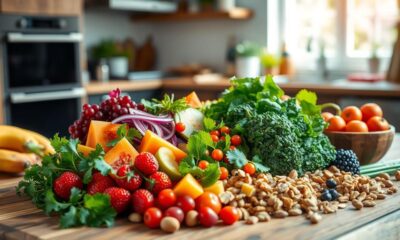
 Health and Wellness2 months ago
Health and Wellness2 months agoDoes Eating Raw Food Help You Lose Weight? Discover the Truth
-
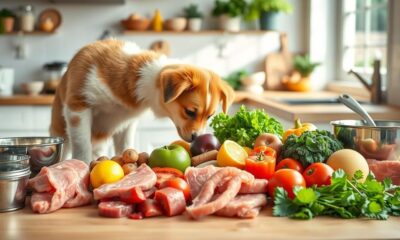
 Raw Food Recipes2 months ago
Raw Food Recipes2 months agoHow Much Raw Food to Feed Your Puppy: Essential Tips
-
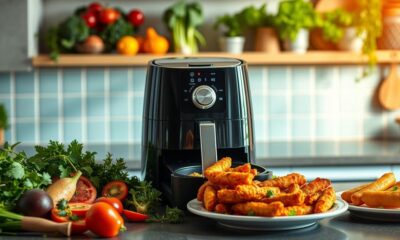
 Kitchen Essentials for Raw Food Preparation1 month ago
Kitchen Essentials for Raw Food Preparation1 month agoCan You Cook Raw Food in an Air Fryer? Discover the Possibilities
-
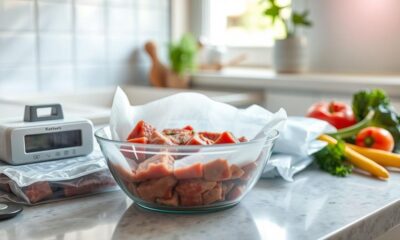
 Raw Food Recipes2 months ago
Raw Food Recipes2 months agoHow to Defrost Dog Raw Food Properly
-
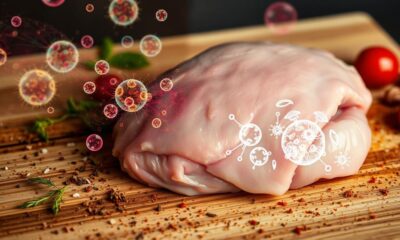
 Health and Wellness2 months ago
Health and Wellness2 months agoHow Long Does It Take Bacteria to Spread From Raw Food? Essential Info
-
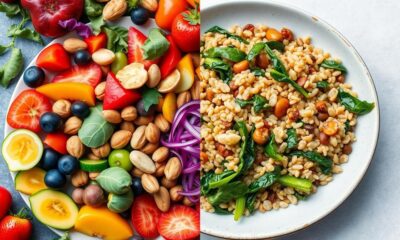
 Raw Food Recipes2 months ago
Raw Food Recipes2 months agoRaw Food Vs. Vegan: Which Diet Is Better?
-

 Raw Food Recipes2 months ago
Raw Food Recipes2 months agoIs Raw Food Good for Cats? Find Out Here
-

 Raw Food Recipes2 months ago
Raw Food Recipes2 months agoWhat Is the Raw Food Diet? A Comprehensive Overview




















